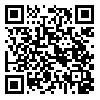Volume 80, Issue 4 (July 2022)
Tehran Univ Med J 2022, 80(4): 264-274 |
Back to browse issues page
Download citation:
BibTeX | RIS | EndNote | Medlars | ProCite | Reference Manager | RefWorks
Send citation to:



BibTeX | RIS | EndNote | Medlars | ProCite | Reference Manager | RefWorks
Send citation to:
Ahadi T, Khaje N, Forogh B, Janbazi L, bagherzadehcham.m@iums.ac.ir M. Evaluating conservative treatments to reduce
coccydynia symptoms: a systematic review. Tehran Univ Med J 2022; 80 (4) :264-274
URL: http://tumj.tums.ac.ir/article-1-11808-en.html
URL: http://tumj.tums.ac.ir/article-1-11808-en.html
Tannaz Ahadi1 
 , Nima Khaje2
, Nima Khaje2 
 , Bijan Forogh1
, Bijan Forogh1 
 , Labaneh Janbazi3
, Labaneh Janbazi3 
 , Masumeh Bagherzadehcham.m@iums.ac.ir *
, Masumeh Bagherzadehcham.m@iums.ac.ir * 
 4
4

 , Nima Khaje2
, Nima Khaje2 
 , Bijan Forogh1
, Bijan Forogh1 
 , Labaneh Janbazi3
, Labaneh Janbazi3 
 , Masumeh Bagherzadehcham.m@iums.ac.ir *
, Masumeh Bagherzadehcham.m@iums.ac.ir * 
 4
4
1- Neuromusculoskeletal Research Center, Firoozgar Hospital, School of Medicine, Iran University of Medical Sciences, Tehran, Iran.
2- Department of Physical Medicine and Rehabilitation, School of Medicine, Iran University of Medical Sciences, Tehran, Iran.
3- Neuromusculoskeletal Research Center, Hazrat Fatemeh Hospital, School of Medicine, Iran University of Medical Sciences, Tehran, Iran.
4- Neuromusculoskeletal Research Center, Firoozgar Hospital, School of Medicine, Iran University of Medical Sciences, Tehran, Iran.| Department of Orthotics and Prosthetics, School of Rehabilitation, Iran University of Medical Sciences, Tehran, Iran. ,bagherzadehcham.m@iums.ac.ir
2- Department of Physical Medicine and Rehabilitation, School of Medicine, Iran University of Medical Sciences, Tehran, Iran.
3- Neuromusculoskeletal Research Center, Hazrat Fatemeh Hospital, School of Medicine, Iran University of Medical Sciences, Tehran, Iran.
4- Neuromusculoskeletal Research Center, Firoozgar Hospital, School of Medicine, Iran University of Medical Sciences, Tehran, Iran.| Department of Orthotics and Prosthetics, School of Rehabilitation, Iran University of Medical Sciences, Tehran, Iran. ,
Abstract: (1252 Views)
Background: There are many conservative interventions to reduce the symptoms of coccydynia, but it is not clear which treatment can be more effective. The aim of this review study was to evaluate the types of conservative interventions and the effectiveness of each of them in reducing coccydynia symptoms.
Methods: This systematic review was carried out based on PRISMA (Preferred Reporting Items for Systematic Reviews and Meta-Analyses) instruction. A search for research studies published up to October 2021 was conducted in Neuromusculoskeletal Research Center, Firoozgar General Hospital, Iran University of Medical Sciences, Tehran, Iran, using Scopus, Science Direct, Web of Knowledge and Cochrane without data constraints. The search was carried out in October 2021 and continued for seven months. The quality of the articles was evaluated using the Physiotherapy Evidence Database scale (PEDro). All prospective randomized clinical trial studies in which participants suffered from coccydynia and were treated with nonsurgical treatments were included.
Methods: This systematic review was carried out based on PRISMA (Preferred Reporting Items for Systematic Reviews and Meta-Analyses) instruction. A search for research studies published up to October 2021 was conducted in Neuromusculoskeletal Research Center, Firoozgar General Hospital, Iran University of Medical Sciences, Tehran, Iran, using Scopus, Science Direct, Web of Knowledge and Cochrane without data constraints. The search was carried out in October 2021 and continued for seven months. The quality of the articles was evaluated using the Physiotherapy Evidence Database scale (PEDro). All prospective randomized clinical trial studies in which participants suffered from coccydynia and were treated with nonsurgical treatments were included.
|
Results: 945 articles were found in the primary search of the databases. After eliminating 493 repetitive papers, 452 studies remained which were screened by the two researchers of this study in terms of the title and abstract. 40 studies were selected for full-text evaluation. Finally, 12 articles were included in the review study. Two papers used extracorporeal shockwave, two papers used impar ganglion block, three papers manual therapy, and four studies injection. The remaining four studies used iontophoresis with ketoprofen, biofeedback therapy, acupuncture, and physiotherapy with Kinesio taping.
Conclusion: Treatment with extracorporeal shock wave and impar ganglion block significantly improve tailbone pain and show more permanent effects on patients' symptoms. Manual therapies are mostly used in cases where the tailbone is stable. It seems that achieving the desired response requires more than six sessions, which is not pleasant for patients. Injections, especially those performed under fluoroscopic guidance, require high skill in addition to being unpleasant and painful. However, this procedure is done in one session, so there is no need for the next visit. |
Keywords: coccyx, pain, conservative treatments, extracorporeal shockwave therapy, injections, musculoskeletal manipulations.
Type of Study: Review Article |
Send email to the article author
| Rights and permissions | |
 |
This work is licensed under a Creative Commons Attribution-NonCommercial 4.0 International License. |



